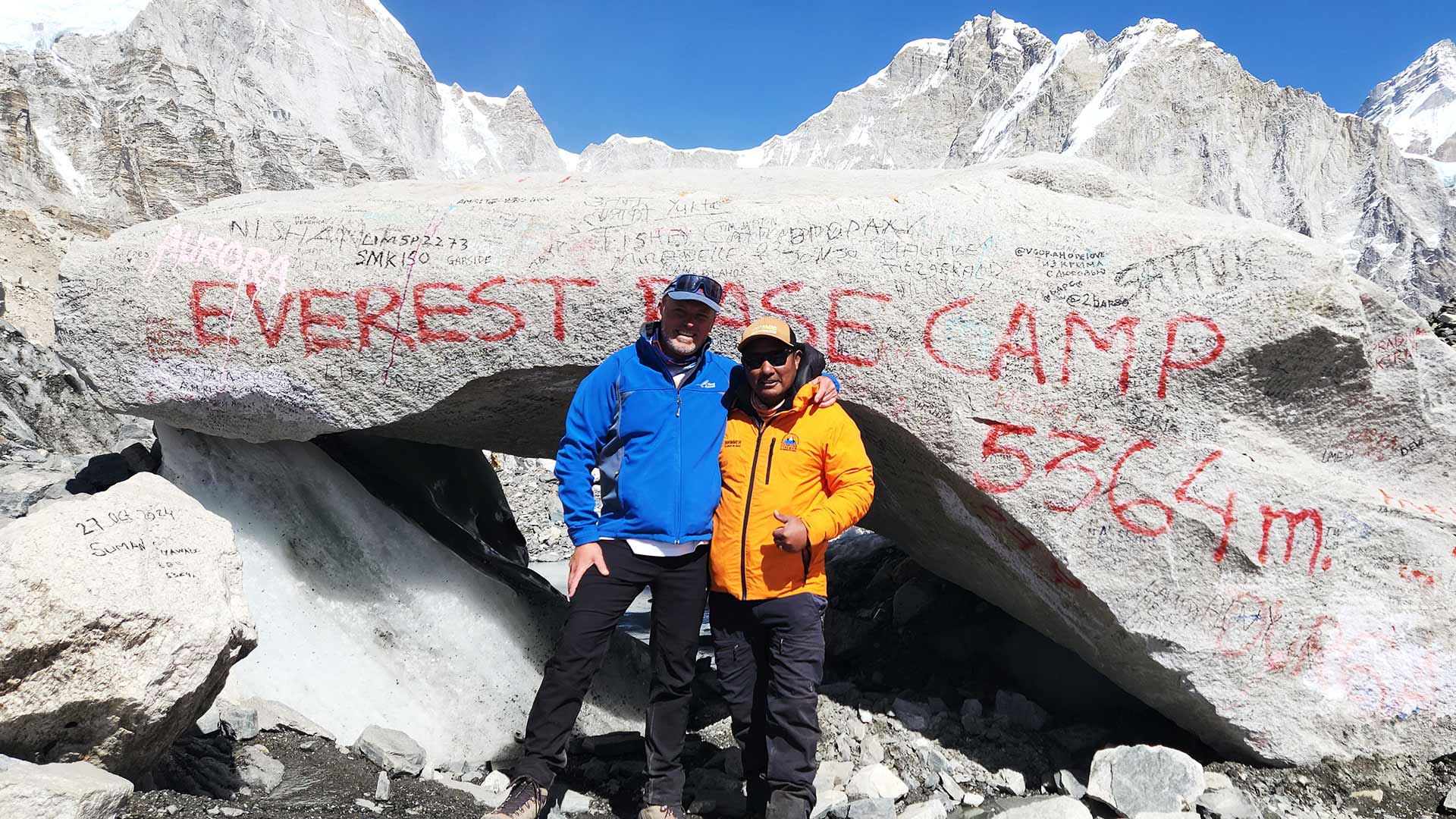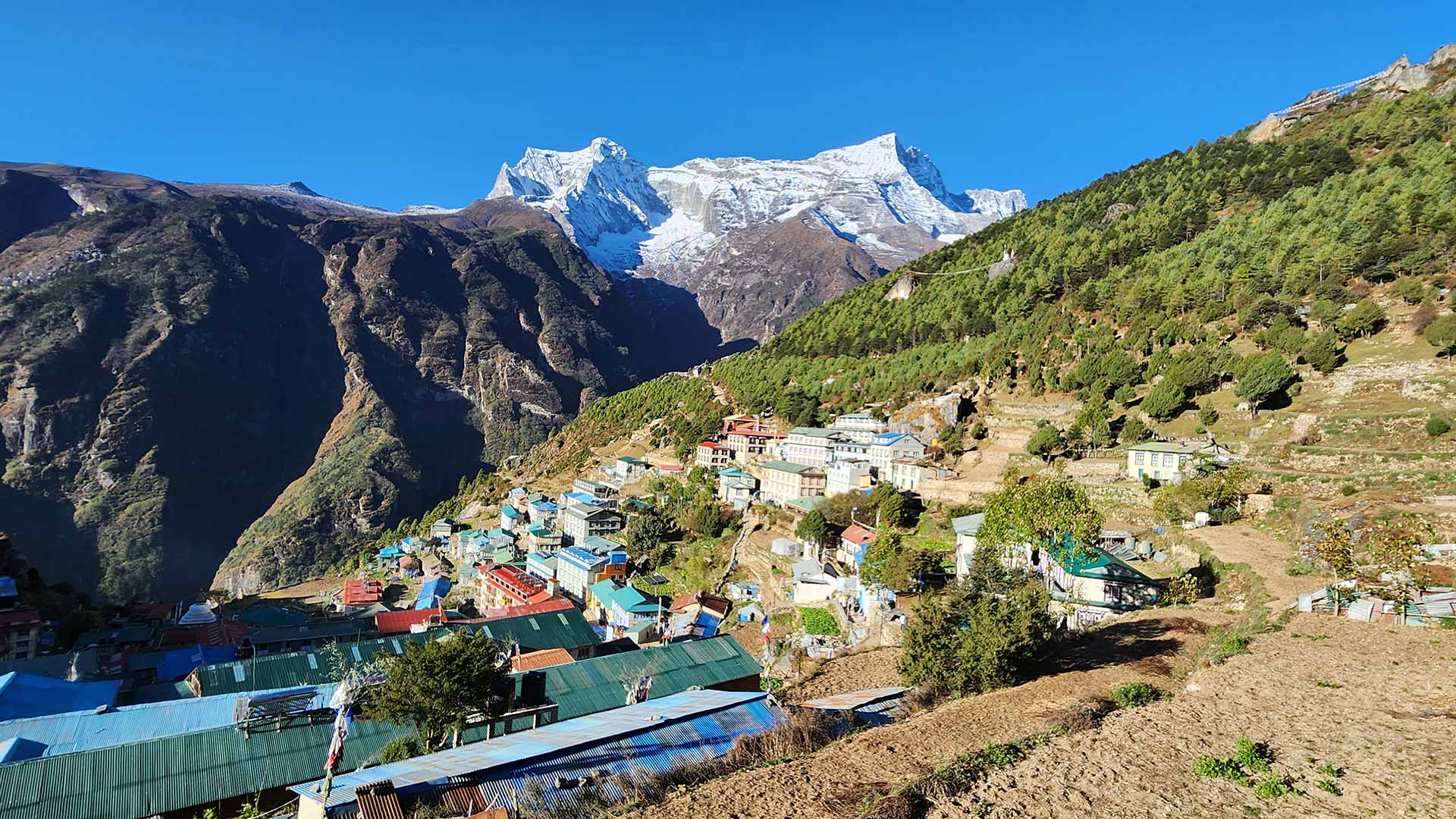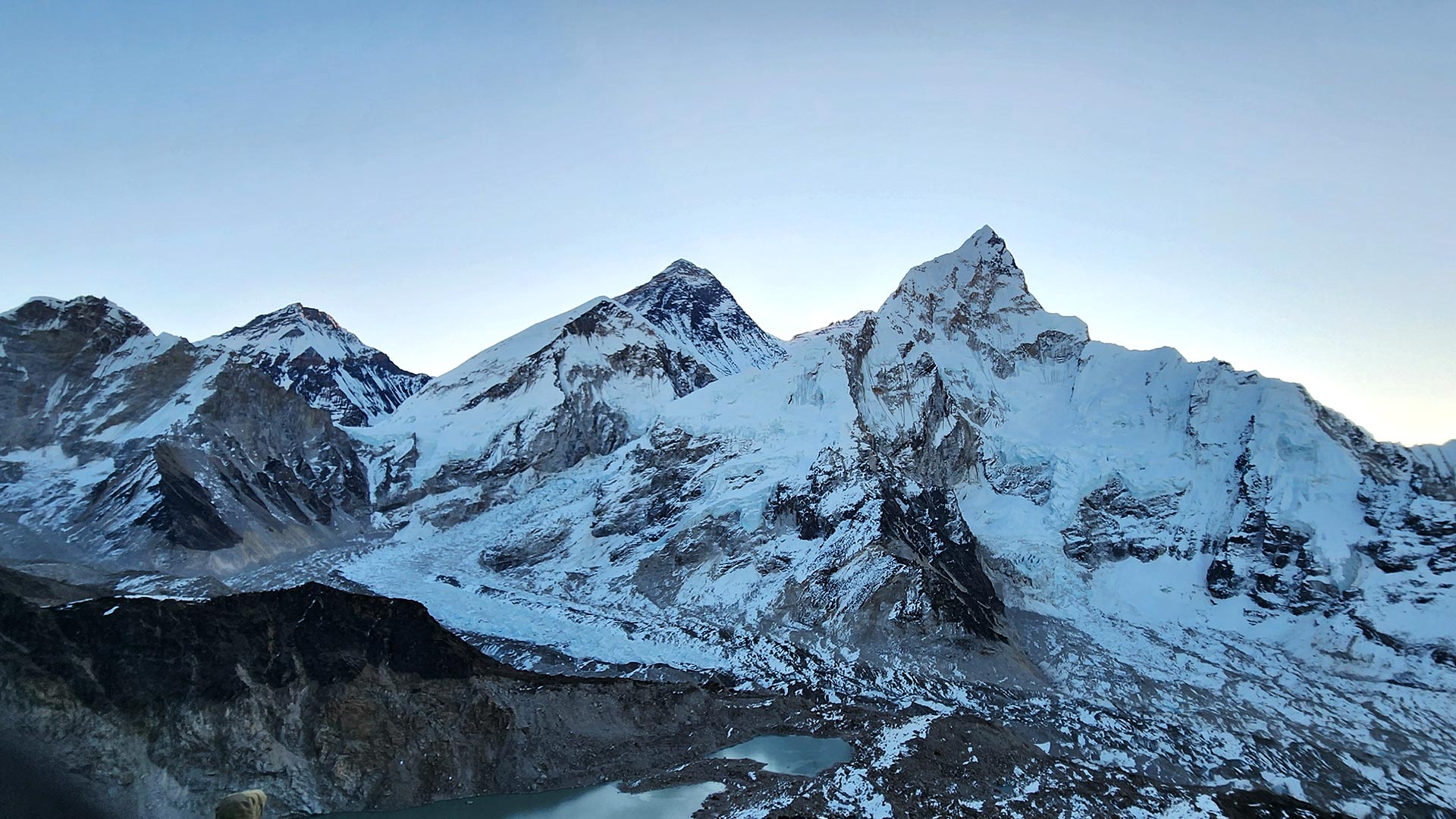Everest Base Camp:Everything You Need To Know About EBC

Everest Base Camp(EBC) is located at 5,364 meters (17,598 ft) in Nepal's Khumbu region. It sits at the base of the Khumbu Icefall, and on the foot of the world's
highest Mount Everest also known as Sagarmatha locally. When we talk about EBC, there are two Everest Base Camps, one on the Tibet side, Everest Base Camp North
Side (5200m) which is just below the
Khumbu glacier. Everest Base Camp Nepal, is not a single viewpoint - it's a point of arrival for trekkers and a starting spot for mountaineers heading to the
summit. It's not a single structure - it's a seasonal camp built with tents and basic equipment. During spring, the area is filled with mountaineers, Sherpa
guides, cooks, and support staff for the Everest Expedition. EBC is inside Sagarmatha National Park, a protected area and UNESCO World Heritage site. To reach base camp, you have to walk several days from Lukla, passing
through places like Namche Bazaar, Tengboche, and Gorakshep. Every year, thousands of people trek to Mount Everest Base Camp for the views, the challenge, and the chance to stand at the base of Mount Everest(Sagarmatha Mountain) For climbers, Base Camp Everest is the starting line for the Everest Summit. You can feel the scale of the Himalayas and see how people live at high
altitude.
Getting to EBC: Lukla and the Trek In
 Lukla Airport, officially Tenzing-Hillary Airport, is the main gateway to Everest Base Camp Trek and Everest Expeditions. It is located in the Khumbu region
Lukla Airport, officially Tenzing-Hillary Airport, is the main gateway to Everest Base Camp Trek and Everest Expeditions. It is located in the Khumbu region of eastern Nepal, at an altitude of about 2,845 meters (9,334 feet). The flight to Lukla takes about 30 minutes. The runway is short - only around 527 meters long - and ends at a cliff. This makes takeoffs and landings challenging especially in bad weather. Flights to Lukla usually depart from Kathmandu or Ramechhap. Despite the challenges, Lukla is a key access point to the Everest region. For many, it's the first step towards reaching Sagarmatha Base Camp which takes around
12-14 days to complete the trek.
Key Places Along the Everest Base Camp (Camp One Everest)
Namche Bazaar
 Namche Bazaar is a small town in the Khumbu region of Nepal, at about 3,440 meters (11,286 feet). It's a major stop for trekkers heading to EBC, Everest.
The town sits on a hillside and offers views of surrounding peaks. It has shops, cafes, bakeries, and lodges—making it a comfortable place to rest and acclimatize
Namche is also a cultural hub. You'll find a weekly market, a museum, and nearby monasteries. Many trekkers spend at least two nights here to adjust to the
altitude before going higher.
Namche Bazaar is a small town in the Khumbu region of Nepal, at about 3,440 meters (11,286 feet). It's a major stop for trekkers heading to EBC, Everest.
The town sits on a hillside and offers views of surrounding peaks. It has shops, cafes, bakeries, and lodges—making it a comfortable place to rest and acclimatize
Namche is also a cultural hub. You'll find a weekly market, a museum, and nearby monasteries. Many trekkers spend at least two nights here to adjust to the
altitude before going higher.
Tengboche Monastery
 Tengboche Monastery is the spiritual heart of the Everest region. Located at 3,867 meters, it sits on a ridge with wide views of Everest, Ama Dablam, and other
nearby peaks.
It is a key place for the Sherpa community and a peaceful stop for trekkers heading to Base Camp Himalaya. Visitors are welcome to sit in on the monks’ daily
prayers, which adds a quiet, reflective pause to the trek. The monastery is an important part of life and tradition in the Khumbu region.
Tengboche Monastery is the spiritual heart of the Everest region. Located at 3,867 meters, it sits on a ridge with wide views of Everest, Ama Dablam, and other
nearby peaks.
It is a key place for the Sherpa community and a peaceful stop for trekkers heading to Base Camp Himalaya. Visitors are welcome to sit in on the monks’ daily
prayers, which adds a quiet, reflective pause to the trek. The monastery is an important part of life and tradition in the Khumbu region.
Kala Patthar
 Kala Patthar is one of the best places to see Mount Everest up close. It is a rocky hill near Base Camp Everest, sitting at around 5,545 meters (18,192 feet).
The climb is short but steep, and the high altitude can make it harder. Still, many trekkers make the effort - especially for sunrise. From the top, you get clear
Kala Patthar is one of the best places to see Mount Everest up close. It is a rocky hill near Base Camp Everest, sitting at around 5,545 meters (18,192 feet).
The climb is short but steep, and the high altitude can make it harder. Still, many trekkers make the effort - especially for sunrise. From the top, you get clear views of Everest, Nuptse, and other peaks. It’s often the most rewarding part of the trek.
Sagarmatha National Park
Sagarmatha National Park is home to Mount Everest and other major Himalayan peaks. Located in eastern Nepal, it was established in 1976 and is listed as a UNESCO World Heritage Site. The park spans about 1,148 square kilometers, with elevations ranging from 2,800 to over 8,800 meters. Its landscape includes forests, glaciers, alpine meadows, and high mountain terrain. Wildlife here includes snow leopards, red pandas, Himalayan tahrs, and many birds. The park is also home to Sherpa communities, with monasteries and villages spread throughout the region.Sherpa Culture
Sherpas are the local people of the Everest region, known for their expertise in mountaineering. Many work as guides and porters for Everest expeditions. Their culture is rooted in Buddhism, with monasteries, prayer flags, and chortens scattered throughout the area. Sherpas honor nature through rituals and festivals, viewing the mountains as sacred. Their strength, hospitality, and deep connection to the land play a key role in the Everest trek experience.Teahouse Accommodation at Base Everest Camp
You dont need to carry a tent. The trail has teahouses—basic lodges with rooms, food, and shared bathrooms. Most have a stove in the dining room, where everyone gathers in the evening. Rooms are cold at night, so you need a sleeping bag. The higher you go, the simpler the teahouses become.Altitude and Acclimatization
Altitude is the biggest challenge of trekking to Mt Everest Base Camp. Starting at around 2,800m and going over 5,000m means your body needs time to adjust. Common symptoms of altitude sickness include headache, dizziness, nausea, and fatigue. If symptoms get worse, the only solution is to descend. Trekkers spend 2 to 3 rest days for acclimatization. One is usually in Namche Bazaar, another in Dingboche (4,410m).EBC Distance and Duration
The trek to Everest Base Camp is about 130 kilometers (80 miles) round trip. It usually takes 12 to 14 days, with extra time for acclimatization to the altitude. Starting from Lukla, trekkers pass through villages like Namche Bazaar and Tengboche before reaching Base Camp. The duration can vary based on fitness, weather, and rest days for adjusting to the high altitude.Everest Base Camp Weather
The weather at Everest Base Camp varies by season:- Spring (March to May): The most popular season. Clear skies, blooming rhododendrons, and stable weather. Warm days at lower altitudes, freezing nights at base camp.
- Autumn (Sept–Nov): Another ideal time to trek. Dry, clear, and cool with crisp mountain views. Nights are cold, especially above 4,000m.
- Winter (Dec–Feb): Cold and quiet. Days are sunny but temperatures drop well below freezing at night. Fewer trekkers, with snow on higher trails.
- Monsoon (June–Early Sept): Wet and cloudy. Trails are slippery and flights to Lukla often delayed. Fewer crowds but limited views.
EBC Difficulty
The trek to Mt Everest Base Camp is physically demanding. It doesn't require technical climbing, but the altitude, cold, and long days make it hard. You don't need to be a mountaineer. But you should be fit enough to walk several hours a day. Regular hiking and cardio before your trip help. Everest Base Camp (Sagarmatha Base Camp) is not a viewpoint. It is a real place - tents, rock piles, and climbers getting ready for the summit. You feel the energy of the mountain there. If you prepare well and respect the altitude, it is a trek you'll never forget. Everest Base Camp (Base Camp Himalaya) is not just a destination — it is a place that makes you pause. Whether you come to climb or just to reach it on foot, being there puts things in perspective. It is harsh, quiet, and far from everything familiar. But standing at the base of the world's highest mountain, surroundedby ice , rock, and silence, stays with you. It is a reminder of how small you are - and how far you have come.